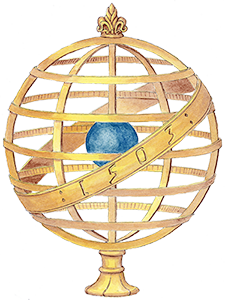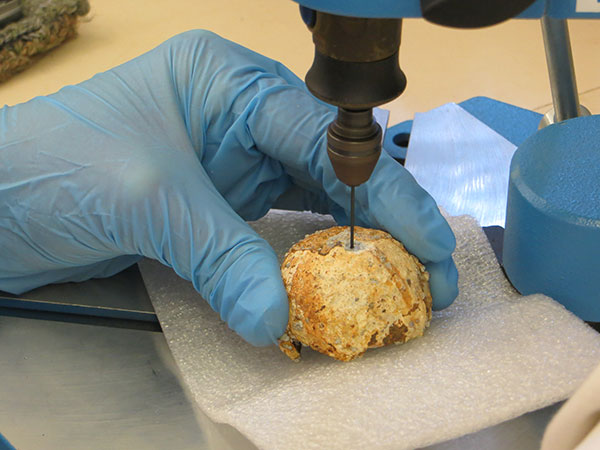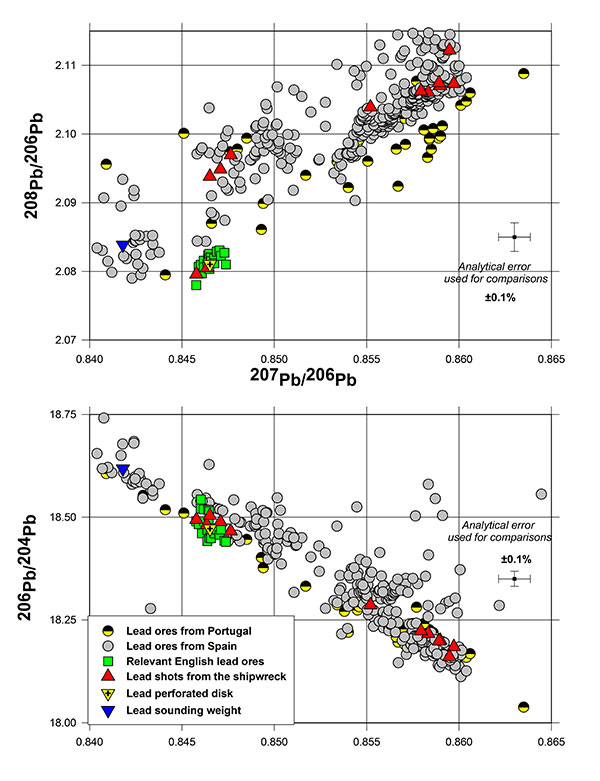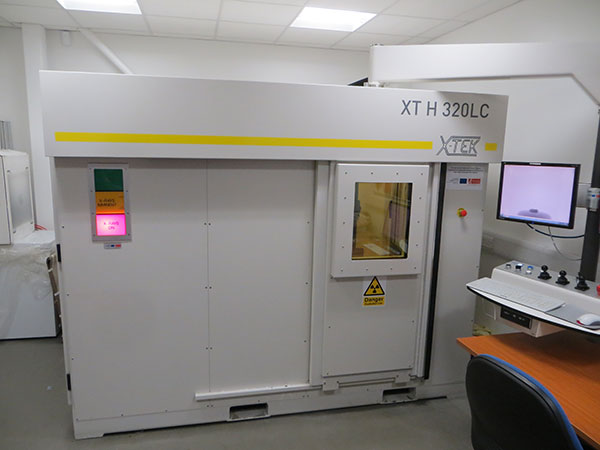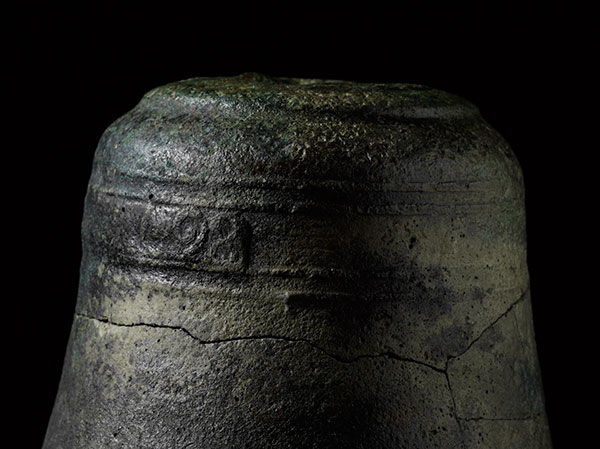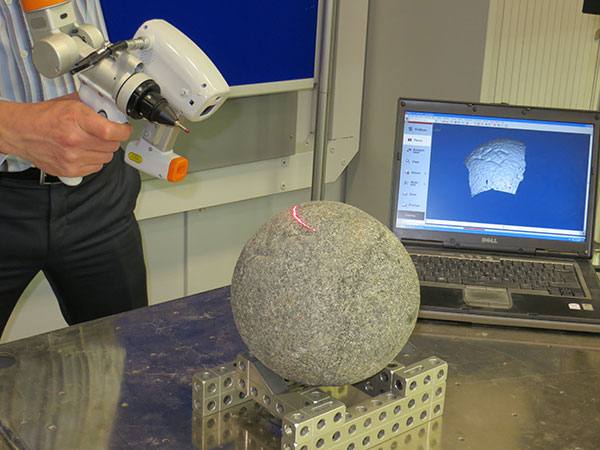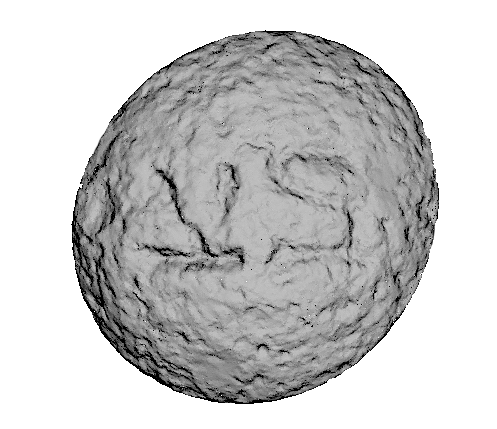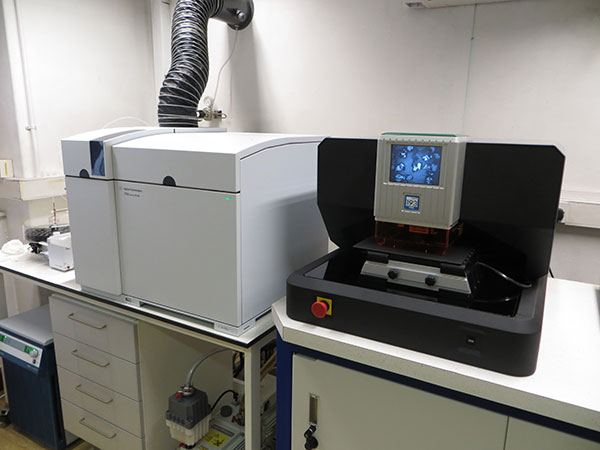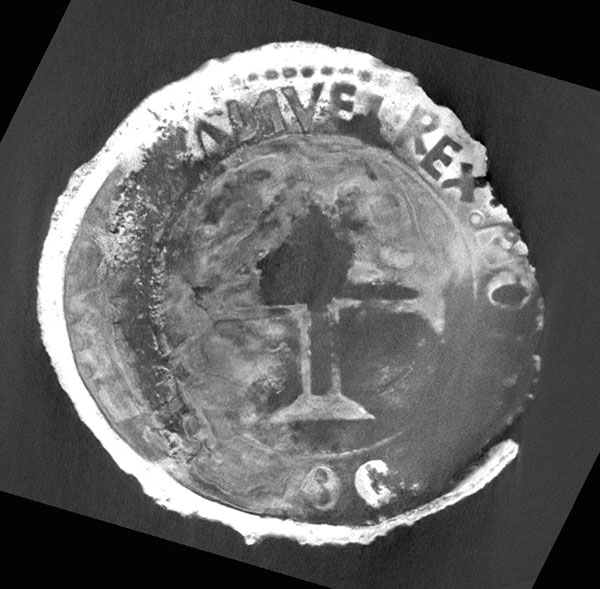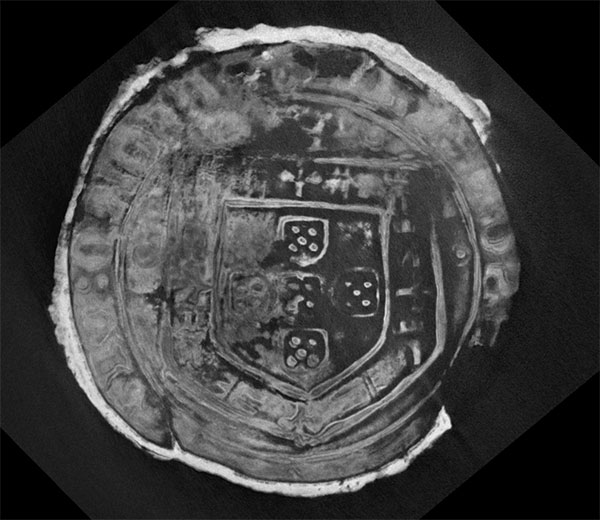SCIENCE
Extracts from : A Portuguese East Indiaman from the 1502–1503 Fleet of Vasco da Gama off Al Hallaniyah Island, Oman: an interim report, Mearns, D.L., Parham, D., and Frohlich, B, International Journal of Nautical Archaeology Vol. 45.2, © 2016 The Nautical Archaeology Society.
An important objective of this project has been to use the best possible cutting-edge scientific and technical methods in the examination and investigation of the recovered artefacts. This included enlisting the help of a group of top scientists and experts to analyse and interpret the data that was collected. The initial focus of this work was to see if it was possible to determine the provenance and age of the artefacts, or the source materials they were made of, to corroborate the archaeological evidence indicating the wreckage was a Portuguese shipwreck from the early 16th century. In short, the scientific analysis summarised below was conducted to build an airtight case for identification of the wreckage as the remains of Vicente Sodré’s nau Esmeralda.
Lead Provenancing
The ability to determine the geological origin or provenance of lead in objects, in terms of which ore deposits in which countries the lead was mined from, is a relatively new tool to maritime archaeology studies although the idea of tracing ancient metal objects back to the ore deposit dates from as early as 1928. The methodology, known as lead provenancing, is based on the direct comparison of lead isotope (LI) ratios (208Pb/206Pb, 207Pb/206Pb, 206Pb/204Pb) with available data from different mines around the world. The largest database of known LI ratios was developed at the Isotrace Laboratory, University of Oxford (OXALID) and it now contains over 6,000 data sets for lead and copper ores published by numerous researchers.
For this project 15 different aretfacts (composite shot, a perforated disk and a sounding weight) were used to provide small (~1.5 mg) samples of clean metal, free of surface corrosion, for the analysis. The 15 samples were sent to Durham University where Dr. Geoff Nowell of the Arthur Holmes Isotope Geology Laboratory conducted plasma sourced multi-collector mass spectrometry (MC-ICP-MS), including Thallium correction. Dr. Zofia Stos-Gale, former Director of the Oxford Isotrace Laboratory analysed and interpreted the raw LI data to determine the possible origins of the metal.
A detailed description of Dr. Stos-Gale’s analysis can be found in our recent article published in the International Journal of Nautical Archaeology (Mearns, et. al., 2016). Dr. Stos-Gale found that the lead used in making the artefacts is consistent with ores from the large Los Linares mine in south-east Spain; mines in south-west Spain (Ossa Morena, La Dehessa or Azuga in Estramadura); the Ossa Morena mine in Portugal; Pais Vasco in north-west Spain, and British lead mines in Derbyshire and Somerset or Cheshire. Each of these mines is well known for extensive and mostly continuous exploitation of lead ores since prehistoric times and is thus consistent with Portuguese trading patterns in the early 16th century.
CT Scanning of the Ship’s Bell
One of the more exciting artefacts found on the wreck site was a small ship’s bell. Remarkably, the bell was discovered beneath a boulder at a depth of just 4.3 metres where it had been stuck for the past 510 years. Even more remarkable was that the fragile bell, despite being fractured in two pieces, appeared to have a raised inscription just below the shoulder containing letters and numerals that might be a clue to the identity of the ship. The problem, however, was that the inscription was barely visible beneath a thick layer of corrosion crust.
As the only possible way to decipher what was written in the inscription without physically touching or harming the bell was by X-raying it, the bell was taken to WMG, University of Warwick to see whether their experts could help. At WMG Professor Mark Williams suggested non-destructive high-resolution imaging of the bell using their Nikon Metrology 320kV micro-focus X-ray (64 micron resolution) for computed tomography (CT). By CT scanning the bell before any conservation treatment was performed it might be possible to reveal minute details within the inscription. The key to whether this method could possibly work depended on the ability of the powerful 320kV X-ray source being able to penetrate the crust and reveal such internal details.
The CT scanning turned out to be a laborious process expertly performed by Dr. Jason Warnett. Multiple 3.5-hour scan cycles, consisting of 3,142 individual X-ray projections, with different orientations of the bell were necessary to achieve optimum penetration whilst minimizing unwanted X-ray scatter that would obscure characters in the inscription. The first characters that revealed themselves were an ‘8’ and an ‘M’ that were barely visible to the naked eye. The next scan clearly revealed a ‘9’ to the left of the ‘8’, and then a final scan revealed a less apparent ‘4’ to the left of the ‘9’. Although no other letters could be made out in addition to the ‘M’, this non-destructive imaging indicated that the inscription included a date (‘498’) that was at least chronologically correct with the known history of Sodre’s squadron, which had left Lisbon in 1502
Importantly, the conservator also benefited from having this information in advance to help guide physical removal of the corrosion crust. With the corrosion removed the characters revealed by the CT scanning became more visually apparent as seen in high-quality photographs.
Laser and Structured Light 3-Dimensional Imaging of Stone Shot
One of the most interesting set of artefacts recovered from the wreck site were the large igneous stone shot that were all identically marked with the same two characters ‘VS’. These large cannonballs, average diameter 220mm and weight 16 kgs, were probably made for a mortar type or siege gun, which the Portuguese called a bombardas grossas. This type of muzzle-loading artillery would have been mainly used for bombarding fortifications on land. Although all the large guns were salvaged by the surviving Captain Pêro d’Ataíde and by Malik Ayaz in 1508, we know from the historical accounts that the Portuguese did bombard Calicut and thus had this type of gun on ships within the fleet.
In order to better visualize and precisely measure the ‘VS’ mark one of the shot was scanned by both laser and structured-light 3D scanners. The images produced by these different techniques clearly show that the ‘VS’ mark was purposefully carved into the surface of the shot. Whether the stonecutter’s purpose was to mark these particular shot for use with a specific gun or to be delivered to a specific Captain or ship is unknown. All we do know is that instances where stone shot have been similarly marked are a very rare occurrence. The nearest comparable we could find were the cast iron shot recovered from the Mary Rose marked with an ‘H’ for King Henry VIII as owner of the ship. One theory to be explored in future studies is whether the ‘VS’ are the initials for Vicente Sodré and that these shot were specifically made for a gun on board the Esmeralda.
Stone Shot Provenancing
In an effort to match the source of rock used in making the igneous stone shot to known lithologies in Portugal, two of the smaller shot were subjected to separate geochemical and geochronological analyses. The initial assessments made by Dr. Luisa Ribeiro at the Instituto Geológico Miniero in Lisbon (reformed as the National Laboratory of Energy and Geology of Portugal) and by Dr. Ana P. Jesus of GUTech in Oman based on whole rock and trace element analysis ruled out two possible locations in Portugal: the Massif of Sines and the Beja Layered Gabbroic Sequence, respectively.
It was then decided to try and determine the geochronological age of the rock by the dating of detrital zircons entrained within the rock. This analysis was performed by Dr. Andrew Carter at the London Geochronology Centre using laser ablation (193 nm) quadrupole-based ICP-MS. The dating results showed a Neo-Archean to Paleo-Proterozoic source that was overprinted by a Cadomian event circa 550 + 51 Ma. No zircons younger than 500 Ma were found, thus ruling out the Beja LGS or as any other igneous rocks from the South Ossa Morena Zone where magmatic events are dated from 350 Ma onwards. The combination of Cadomian age and apparent lithological variability seen in the two samples suggest that the rocks came from the Sardoal-Mouriscas Complexes, a geologically complex area found in the Abrantes region roughly 150 km north-east of Lisbon along the route of the Tagus River as there are no equivalent rocks with such characteristics in Portugal. Because there is limited available data on the major and trace element geochemistry of the Sardoal-Mouriscas Complexes this suggestion cannot be proved without additional testing, which we hope to conduct in a future study.
Petrographic Analysis of Limestone Shot
Hand samples and thin-section slides made from one of the limestone shot were examined by Miguel M. Ramalho of the LNEG Geological Museum of Portugal. This examination revealed that the limestone shot was composed of calcareous rock bio-intra particles with dispersed fine to medium quartz grains. The bioclasts, mainly echinoderms, bivalves, and foraminifera (Neotrocholina), were generally broken and eroded. Intraclasts, consisting of fine to medium compact micrite, were very abundant and generally not eroded. No characteristic microfossils with stratigraphic value were found in the thin sections. Relative to Portuguese microfacies the rock is similar to Cretaceous (lower to middle Cenomanian) outcrops that occur around the Massif of Sintra just north of Lisbon.
CT Scanning of Silver Coin Clump
All the silver coins recovered from the site were found within a small, concreted mass that also included five gold Portuguese cruzados. As silver coins from this period are better tools for dating than corresponding gold coins, the mass was brought to the UK to be conserved and for detailed examination. Initial X-ray scans of the mass showed numerous silver coins arranged in three discreet coin blocks adhered to a row of five cruzados. The three blocks were mechanically separated from the cruzados following the application of 10% formic acid. Overlying corrosion was removed by scalpel under magnification to fully reveal the surfaces of two silver coins welded together in one of the blocks, enabling their identification by visual means alone.
The two silver coins that could be identified by visual examination were the Manuel índio minted in 1499, and the real grosso minted in the reign (1438-1481) of Dom Afonso V sometime between 1475 and 1479. The índio is an especially important and exciting discovery as it is a legendary coin ordered by Dom Manuel to be struck after the return of da Gama’s first voyage to India. According to the chronicler Damião de Góis, in 1499 Dom Manuel ordered two new coins specifically for trade with India; a large gold coin equivalent to 10 cruzados called the português and a silver coin of the same weight of the Italian coins that were being used in the Indian trade, which was named índio: “The Indian”. The índio and the português are distinctive, almost unmistakable coins as they share virtually the same reverse engraving which for the first time with any Portuguese coin included the cross of the Military Order of Christ and the legend IИ HOC SIGИO VIИCES: “in this sign you will conquer”. As Dom Manuel was already Grand Master of the Order of Christ before becoming king he adopted the cross as his personal insignia, thus endowing the índio and português with even greater significance and status.
There is only one other known example of índio coin in the world, which is held within the numismatic collection of the National Historical Museum of Brazil (MHN) in Rio de Janeiro. Despite the existence of the MHN specimen, the índio, because of its extreme rarity, has assumed legendary status within the numismatic community of Portugal as the ‘lost’ or ‘ghost’ coin of Dom Manuel I. To ensure correct identification of the índio recovered from the site, the block within which it was contained was CT scanned at WMG, University of Warwick using the 225kV head of the Nikon CT scanner, which provides 16-micron resolution. Even with such relatively poorly preserved coins the resulting scans clearly revealed the same coat of arms and legend on the obverse matching the MHN specimen as well as the detailed description of the same coin that featured in a 1910 auction catalogue from Amsterdam. This same CT scan was also used to confirm identification of the Dom Afonso V real grosso partially visible on the opposite side of this block.
The extent of overlying corrosion of the other two coin blocks (containing three and seventeen individual coins, respectively) was such that no coin surfaces could be seen visually. An attempt to separate the coins in the largest of the two blocks was terminated when it was clear that any further mechanical cleaning or chemical treatment could damage the coins causing information to be irretrievably lost. The only method for investigating the coins encapsulated within the blocks, therefore, was by the CT scanning described above. João Pedro Vieira, Curator of Coins and Paper Money with the Bank of Portugal, assisted the analysis, which included the precise measurement of individual coin diameters. Although visualization of the coin surfaces in the CT scans was difficult all the coins in these two blocks were identified as either meios vinténs or vinténs from the reigns of Manuel I or João II.
